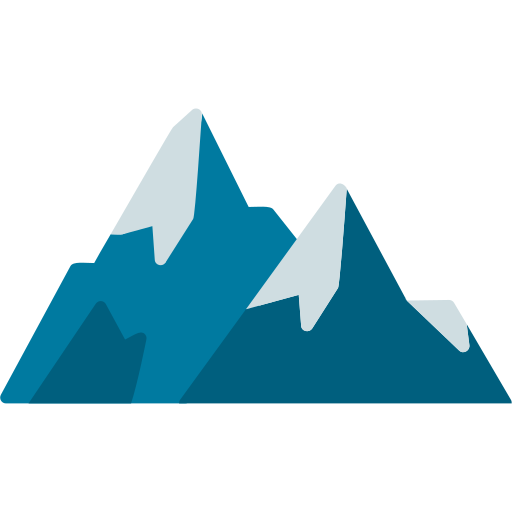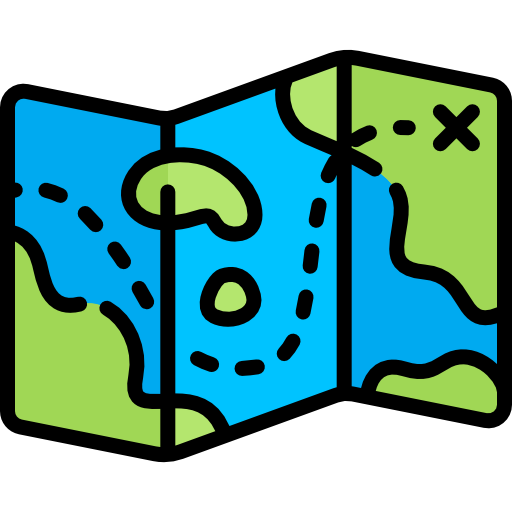Buran Ghati Trek
/ Per Person

Altitude :
13800 ft

Duration:
7D

Trek Length

Base Camp:

Trek Difficulty :

Altitude :
13800 ft

Duration:
7 Days

Trek Length

Base Camp:

Trek Difficulty :
Overview
The Buran Ghati Trek gives you an adventurous experience in the untouched parts of the Himalayas. It allows the trekkers to experience forest trails amidst different coniferous treesand rhododendrons, and vast meadows with lush greenery. Overall, you can say that the Buran Ghati Trek puts several experiences in one basket. The trek begins in an ancient village called Janglik in the Kinnaur District of Himachal Pradesh. The place is around 150 KM from Shimla. The highest point of the Buran Ghati Trek is the Buran Ghati Pass, which is situated at a height of 15000 ft.
What makes the Buran Ghati Trek special?
The trekkers can enjoy observing the old buildings and local architecture before starting the trek. Once the trek begins, the trekkers follow the trail through the forests before reaching the Dayara Bugyal (meadow). The photography enthusiasts will not be disappointed here as the views are breathtaking. You can meet the local shepherds and observe the cattle herds running across the meadows. If you have some prior trekking experience, choosing the Buran Ghati Trek can be a good decision as it is moderately difficult, and suited for experienced trekkers. The holy Chandranahan Lake is also a major attraction because of its high spiritual significance.
The terrain can be challenging, especially in some patches but the views are rewarding. The scenery of the Buran Ghati Trek changes throughout the year depending on the season. You can choose the season of the trek as per your expectations and preference but you can be assured about lasting memories once you come down. You can be a trekker of any experience level, but the Buran Ghati Trek makes sure that each of you has something to take back home.
The local culture is very rich and it is refreshing for the trekkers to educate themselves about the local people and their traditions after finishing the trek. The locals are quite friendly and enthusiastic. They will tell you about local folklore and mythological stories but you will be amazed as there are many stories hidden in this region. The local cuisine is amazing as they are freshly prepared and therefore, a must-try. These are some of the ways you can spend the buffer day. You always have the choice to rest but engaging with the local people and their culture will help you to connect on a deeper level.
Itinerary
Day 01: 150 km drive from Shimla to Janglik (9,200 ft)
Assemble early in the morning (by 8 a.m.) in Shimla and board your vehicles for the drive to Janglik. We travel through mixed forests along the Pabbar River. The sides of the road are lined with villages with beautiful Himachal homes and wheat step fields. The road is in poor condition from Chirgaon onwards. After crossing the Pabbar River at Tonglu, the road climbs to Janglik. The journey takes about 8-9 hours.
Day 02: Janglikh to Dayara Thach (11,000 ft)
We pass through the homes of the villagers. We travel through the village in less than half an hour. The trail starts with a steep incline. Stop after you’ve climbed a long way to get a clear view of the valley. You can see Janglik, Tonglu, and other nearby villages from here. The trail reaches the woods and gradually ascends. After a long climb, walking under the shade of trees is a welcome change. The scenery along the trail is breathtaking. The path goes into and out of the forest a few times before arriving at our destination for the day and camping for the night.
Day 03: Dayara Thanch to Litham Thanch (11,800 Feet) 3 Hours approx
Get up early in the morning to glimpse the sun’s golden rays dropping on the grass in the meadow. With a hot cup of tea, take in the scenery. Forests, meadows, and gushing streams of water make up the majority of today’s trail. We stroll through the meadows on our way to the Gunas Pass. The view of the Dhauladhar range after crossing a stream is breathtaking. We reach the forest of Bhoj trees a few minutes later (Silver Birch). We eventually come across another stream. Cross it and you’ll get your first sight of Litham. We’d go for a stroll in a lovely meadow once more. We cross the Chandranahan Stream and arrive at our day’s campsite across the meadow. Litham is a lovely camping spot.
Day 04: Chandranahan Lake Excursion (13800 ft)
Chandranahan Lake is made up of glacier tarns and perennial snow flanks from the mountains surrounding it. Take the shepherd’s trail to get to the top of the waterfall. From the waterfalls, it takes around 1 hour to reach Chandranahan Lake. This lake offers a view of a glacial amphitheatre nestled in a bowl. Before descending to Litham, take in the snow and stunning stone cairns.
Day 05: Litham to Nalabansh (11700 ft)
At 13,000 feet, the trek from Litham Thach to Nalabansh takes 4 hours. On the right, pass through the cliffs of the Rupin Valley. The first view of Buran Ghati and Gunas waterfall comes as you descend the valley. Nalabansh is reached after a little more than an hour of climbing. Relax at the campsite, then stay for dinner and the night.
Day 06: Nalabansh to Munirang (11150 ft)
It will be the most adventurous thing you have ever done, with a thrilling climb mainly on snow at 15,000 feet. In the snowline, it takes two hours to descend. The road to your overnight campsite is on the other side of the flowing water. Munirang is a lovely place to stay for dinner and the night.
Day 07: Munirang to Barua Village (6600 ft)
The Buran Ghati Trek Itinerary offers an adventurous experience with a thrilling climb on snow at an altitude of 15,000 feet. After an exhilarating descent through the snowline, you’ll encounter gushing streams and picturesque apple orchards on the way to Bruua Khud. Interact with the welcoming villagers, eager to hear your trekking stories. From there, take a car or trek to Karcham before driving to Sangla or Reckong Peo for better road connectivity to Shimla. Alternatively, enjoy an overnight stay at Munirang, a serene campsite perfect for relaxing and savoring the day’s adventures.
Inclusion
- Transportation: Shimla to Barua Village and back, by Bolero/Sumo/Traveller.
- Accommodation: Stay from Janglik to Munirang is included. Accommodations include a guest house or permanent camp at Janglik and camping tents at the campsites, all on a triple-sharing basis.
- Meals: All meals from afternoon snacks at Janglik on the Arrival Day to breakfast at Munirang on the Last Day are included. We provide simple, nutritious, and healthy food daily on the trek. *Note: Meal variety is subject to change, depending on the availability.
- Permit: Forest permit charges are included.
- Tent & Sleeping Bag: Quality tents, mattresses, and sleeping bags are provided in the camps, along with a liner.
- First Aid Kits: Carried by our trek leaders and guides. Emergency medical issues are addressed with utmost care.
- Adept Trek Leaders and Team Members: Our local Himalayan team includes professional trek leaders with mountaineering qualifications and familiarity with the local terrain. The team also includes well-trained guides, cooks, and helpers.
Exclusion
- Food During Road Journey: Meals between Shimla to Barua Village are not included.
- Backpack Offloading Charges: An additional charge of Rs-500/- per bag per day for offloading, with a maximum weight limit of 10 kg per backpack.
*Note: Suitcases/trolleys/duffel bags are not allowed. Offloading during the trek is subject to prior arrangement. - Stay & Unplanned Transport: Accommodation in Dehradun or any unplanned transportation, which is not mentioned in the itinerary.
- Personal Expenses: Any kind of personal expense is not included in the cost.
- Rescue Cost: Expenses for any trekker needing to be sent back or rescued.
- Others: The Buran Ghati Trek Cost excludes transportation, personal gear, insurance, unforeseen expenses, transit meals, tips, and additional services like mules or porters.
Fitness
As you climb to higher altitudes, the air grows thinner and less oxygen is present. The amount of oxygen in our blood is equivalent to the proportion of haemoglobin that is saturated with oxygen. At altitudes above around 2,100 metres (7,000 feet), the amount of oxygen carried by our blood starts to decrease. At the same time, the human body possesses both immediate and long-term adaptations to altitude that help it somewhat compensate for the shortage of oxygen.
A Great First Trek for Anyone Who Wants to Get Into Hiking:
- The Bali Pass trek is an Easy to Moderate level trek in terms of fitness requirements. The track is well-marked and has only modest inclines and declines. Water fountains may be seen at various points throughout the path. However, it’s still best to be ready if you’re planning your first major Himalayan trekking adventure. Here is a plan for getting in shape for the trip.
- Our hikes are typically designed such that you cover around 9 kilometres in six hours, however this might vary somewhat depending on the terrain. It’s about the same as walking 6 kilometres an hour over the plains, therefore the speed is around 1.5 kilometres per hour.
- Following this plan, you may train yourself to run 3 kilometres in 30 minutes. Always begin your workout routine with some light stretching and warm-up moves.
- Follow this training schedule for trekking fitness required:
- Week 1: Walk for 10 minutes at a fast pace, jog for 10, and finish with a slow stroll for 10 minutes.
- Week 2: 15 minutes of jogging, followed by a 5-minute brisk walk. A leisurely stroll that takes no more than 5 minutes
- Week 3: Walk briskly for five minutes. Jogging for 15 minutes A brisk stroll that takes no more than 5 minutes
- Week 4: Do a brisk 5-minute walk, then a 25-minute jog, and finish with a 5-minute cool down.
Safety
Points to remember for safety in the trek:
- It is essential that you arrive at the starting point of any hike or excursion in the best possible physical condition and readiness.
- The hike is not tough; in fact, if you can keep both your feet and your mind calm and strong during the journey, you will discover that the hike is rather simple.
- When you are out on a hike, bear in mind that you may not always be with your guide and that you may not always be on the correct trail.
- The majority of individuals glance both where they are going and where they are going while they are walking; this might produce twitching in your legs, which can make the whole journey difficult.
- It is imperative that you see your physician if you are experiencing any kind of health issue.
- It is imperative that I have my medical equipment with me at all times; it is of the utmost significance.
- Indiantreks will ensure that you have a fully stocked first aid kit at all times, including oxygen cylinders and other medications that may be required throughout the trek.
- In the event that any of the trekkers have any more difficulties, the stretcher is used to transport them back to the base camp.
- During the Bali Pass trek walk, our camp is situated close to the tree line, so you won’t have any trouble getting enough oxygen there.
- In the event of a medical emergency, you should seek the assistance of your guide or another trekker who is knowledgeable in the area.
How To Reach
Directions to go to Dehradun:
- By Air: Jolly Grant Airport is the domestic airport that serves Dehradun, and it receives frequent flights from the main metropolises located across India.
- Traveling by Train: The Dehradun junction is the closest railway station, and it has excellent connections to major cities located around India.
- By Road: The road network in and around Dehradun is extensive and convenient. To get to Dehradun from Delhi or any of the other surrounding cities, you have the option of either driving there yourself or hiring a cab or taxi. In addition, there is a consistent bus service between Dehradun and the surrounding areas because to the extensive road network.
Thing To Carry
PARTICIPANTS MUST BRING FOR BALI PASS- TREK
- 50–60 ltrs backpack
- Strong hiking boots: a leather upper is best because it gives your ankles more support. If you don’t have a pair yet, you should get one as soon as possible and wear it a lot so that it breaks in well. This will help keep blisters from forming.
- Tennis shoes or sandals that are light enough to wear in camp
- Two pairs of thick wool socks, if possible.
- Two pairs of everyday nylon socks to wear underneath the wool socks to prevent blisters.
- One shirt for hiking, preferably with long sleeves.
- Long John top: This is also called thermal underwear, and it should be made of wool if it is the first layer.
- Two each of warm shirts and pants for camp
- 1 each rain cot/poncho
- Warm Jacket: 1
- One pair of wool gloves as thick as can be bought on the market.
- Long Johns: The first layer should be wool if possible.
- Under wear: 2-3 changes Shorts or pants for hiking: 1
- Sunscreen lotion is up to you. Chap stick or lip balm is optional.
- Water bottle: Two 1-liter bottles (Pepsi bottles work well), make sure they don’t leak.
- Headlamp or flashlight: A headlamp is best because it frees up your hands for work. If you bring a flashlight, bring extra batteries.
- Items for the bathroom, like a toothbrush, toothpaste, etc. And a small one-person medical kit.
- Cotton or nylon for a sun hat. Sunglasses: Those with an anchor are best.
Must Read Articles
Best time for the trek
🗓️ Best Time to Trek — A Guide by Octatrav
One of the key advantages of many Himalayan treks is that they remain accessible for a large part of the year. Most trekking routes open up in March, welcoming trekkers with springtime freshness and moderate temperatures. This season continues through late June, offering pleasant weather and clear views—ideal for a memorable trekking experience.
🍁 Trekking resumes in mid-September and continues until late November, when the landscape transforms with golden leaves and crisp air. This autumn window is perfect for those who prefer scenic beauty combined with clear skies.
❄️ Winter trekking, although breathtaking, comes with challenges. From December to mid-March, most high-altitude trails get buried under heavy snow, making them inaccessible or risky. Government authorities usually restrict entry during this time to avoid mishaps due to extreme cold, snowfall, and avalanches.
✅ Summary:
Spring & Summer (March–June): Best time for pleasant weather and blooming landscapes.
Monsoon (July–Early September): Most trails are closed due to safety concerns.
Autumn (Mid-September–November): Ideal time with great weather and views.
Winter (December–Mid-March): High snow levels; many treks remain closed.
With Octatrav, you’ll always be informed about the best seasons for your chosen trek. Our expert guidance ensures that you trek during the safest and most scenic times of the year, making your adventure both memorable and secure.
How Difficult is the trek
This trek is generally considered to be of moderate difficulty, with a rating that can vary from easy to challenging depending on your experience and fitness level.
The journey begins at a base village situated around 6,000 ft, gradually ascending to a maximum altitude of nearly 11,500 ft over the course of a few days.
While the route mostly involves a pleasant hike through scenic landscapes, here are two main reasons why it falls under the moderate category:
– Long daily distances: On average, you may be covering 10 km per day, which demands good stamina and consistent pacing.
– Limited exit points: Most treks of this nature have only one route in and out, making emergency exits or quick returns difficult in case of unforeseen situations.
How to get fit for your trek
How to Prepare for a High-Altitude Trek
Fitness Guide by Octatrav
Preparing for a trek requires building both stamina and strength. One of the best ways to get started is by jogging, which targets the same muscles used during trekking—calves, glutes, and hamstrings. It’s a simple and effective way to improve endurance without the need for any equipment.
Minimum Fitness Target
To trek comfortably, you should be able to run 5 km in under 60 minutes. This ensures that you can maintain a steady pace and handle long walking hours at altitude.
How to Achieve This?
Here’s a structured plan you can follow:
🏃♂️ Cardio Training:
Jog at least 4 times a week – consistency is key.
Start small – begin with 2 km runs and gradually increase the distance.
Pace improvement – once you’re running 5 km, aim to bring your timing down to under 35 minutes.
Maintain for 2 weeks – consistently hitting this goal helps build real endurance.
⏳ Training Duration:
Prepare for at least 4–6 weeks based on your current fitness level. The earlier you begin, the better your trek experience will be.
💪 Strength Training Routine
Combine cardio with strength workouts to build muscular endurance:
Squats – builds quads, glutes, and hamstrings.
Lunges – mimics trekking motion; strengthens the entire lower body.
Step-ups – improves climbing strength for steep trails.
Core exercises – planks, Russian twists, leg raises for balance and stability.
Back workouts – deadlifts, bent-over rows, and shoulder presses to carry your backpack with ease.
🧘♂️ Flexibility & Recovery
Stretch daily – especially your calves, hamstrings, quads, and lower back.
Incorporate yoga or Pilates – enhances flexibility and mental focus.
Take rest days – they are essential for muscle recovery and injury prevention.
🔁 Trek-Ready Summary
🏃♂️ Cardio: Build stamina through jogging.
💪 Strength: Focus on legs, back, and core.
🤸♂️ Flexibility: Stretch regularly and stay injury-free.
⏳ Consistency: Stick to a 6–8 week routine for best results.
10 Reasons to Choose Octatrav for Trek
Why Choose Octatrav for Your Trekking Adventure?
Trekking in the Himalayas is a thrilling and unforgettable experience. Whether you’re walking through snow-covered paths, lush forests, or peaceful riversides, choosing the right trekking operator is crucial for a safe and comfortable journey.
Octatrav stands out as a trusted name in the trekking world. Here are 10 strong reasons to choose Octatrav for your next high-altitude adventure:
1. Experienced Professionals
Octatrav’s team includes highly trained professionals who know the terrain, weather, and routes in depth. Their insights and support will elevate your trekking experience.
2. Focused on Safety
Trekking at altitude can be unpredictable. Octatrav ensures your safety by equipping the team with first-aid kits, oxygen, and emergency protocols for any situation.
3. Small Group Sizes
To give you personal attention and a relaxed experience, Octatrav keeps group sizes small. This also reduces environmental impact and makes for smoother trekking.
4. Eco-Friendly Trekking
Octatrav encourages responsible travel. From minimizing plastic use to proper waste disposal at campsites, they help you leave no trace.
5. Comfortable Camping
After a long day of trekking, good rest matters. Octatrav sets up cozy camps with quality tents, warm sleeping bags, and hot meals so you sleep well and stay energized.
6. Nutritious Meals
Fueling your body right is essential. Octatrav serves fresh, nutritious meals for both vegetarians and non-vegetarians to keep your energy levels high throughout the trek.
7. Affordable Packages
You don’t have to overspend for a great experience. Octatrav offers budget-friendly packages that include accommodation, meals, guidance, and permits—everything you need.
8. Relaxed & Scenic Pace
Octatrav designs treks that balance exploration and rest. You’ll get ample time to absorb the beauty around you without rushing through the journey.
9. Customizable Itineraries
Want a special experience? Octatrav helps you tailor the trek to your preference—be it a solo hike, photography-focused trail, or a slower pace.
10. Trusted by Trekkers
Octatrav is praised by many happy trekkers for its hospitality, safety, and professionalism. The positive reviews speak for themselves.
Why You Should Do the Har Ki Dun Trek
Why Choose This Himalayan Trek for Your Next Adventure? – by Octatrav
Exploring the Himalayas is a dream for many, and every trail has its own magic. Whether you’re a first-time trekker or a seasoned explorer, here are ten reasons why your next trek with Octatrav can be an unforgettable experience:
1. 🏔️ Breathtaking Scenery
Enjoy mesmerizing views of snow-covered peaks, lush green valleys, sparkling rivers, and alpine forests. Each turn on the trail feels like walking through a postcard.
2. 🏡 Rich Cultural Experience
Pass through remote villages where you can interact with warm-hearted locals, witness age-old traditions, and taste authentic mountain hospitality.
3. 🌿 Diverse Flora and Fauna
From rare Himalayan birds to elusive animals like musk deer or black bears, the region is rich in biodiversity. Nature lovers and wildlife photographers will find every step rewarding.
4. 🥾 Moderate Difficulty Level
Most Himalayan treks are rated as moderate, which makes them suitable for beginners with preparation, and still exciting for experienced trekkers looking for beauty and challenge.
5. 📖 Mythological & Historical Depth
Many Himalayan regions are steeped in legend and ancient lore. Walking these trails often feels like stepping into a living story from Indian epics or ancient folklore.
6. 🤫 Peaceful & Untouched
Less commercialized treks offer serene trails where you can disconnect from city chaos and truly reconnect with nature and yourself.
7. ⛺ Unique Campsites
Camp under a sky full of stars, beside rivers or deep in pine forests. The silence, the chill, the camaraderie — it’s an experience that stays with you forever.
8. 🎒 Adventure Add-ons
Beyond trekking, enjoy photography, bird watching, star-gazing, or even meditative moments in nature. It’s not just a trek — it’s a full adventure retreat.
9. 🌅 Magical Sunrises & Sunsets
Witness golden hours like never before — with Himalayan peaks glowing pink, orange, and gold. These views are pure magic and make every effort worthwhile.
10. 💪 Personal Growth
Trekking challenges your body and mind, pushing you beyond limits. By the end, you’ll not only have beautiful memories but also a stronger, more confident version of yourself.
